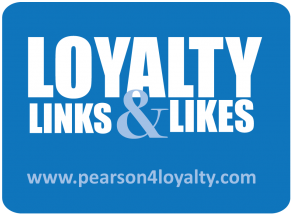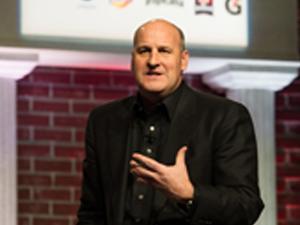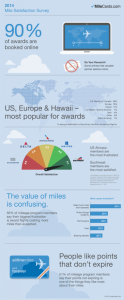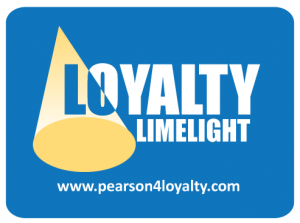Bryan Pearson's Blog, page 38
March 3, 2014
Tipping Points in an Economy of One

From one-to-one to peer-to-peer, the relationship between consumer and brand has been tipping over the past few years, and the consumer is the one gaining scale.
I first saw the makings of this transition two years ago, while writing my book “The Loyalty Leap.” In it I shared four forces that were converging to shape the destiny of marketing. They included the rise and fall of the CFO, an evolving scarcity of attention, the burgeoning power of the consumer, and our own abilities and challenges, as marketers, to deliver one-to-one experiences.For some time we marketers have been talking about the customer in ways that now sound almost quaint: put the customer at the center of your purpose; make all decisions from the customer’s point of view. But today, the customer has firmly placed herself at the center of our purpose, thank you very much, and she will gladly remove herself if we do not give her what she expects.
Today, my company LoyaltyOne has provided a timely update to these forces. Let’s see how much has changed in less than 50 months.
The world is at our fingertips: There are no local businesses anymore. Consumers can easily access companies from across the globe, to the point that even micro-businesses can compete with national brands. We coined a term for this in 2013, “Mompopolies.” But regardless of a company’s size, it can only compete if it meets rising expectations about choice, delivery and experience. Consumers today require emotional engagement, and analytics-based decision-making is one of the sharpest tools for putting this at their fingertips – and ours.
The Peer-to-Peer Economy: The rise of online marketplaces such as eBay and Craigslist have fostered a consumer mindset wherein alliances are formed to share and exchange assets such as cars, houses, parking spaces and even money. It isn’t a small movement – Forbes estimated the P2P economy rose 25 percent in 2013, to $3.5 billion. But beyond spending, people also are joining to share their ideas on other economic activities, from research and development to marketing.
Consumer data awareness: When it comes to data, size does not matter. More important than the amount of data collected is how it is collected, how it is used (including storage) and how it is shared. Most consumers –77 percent – do not feel they are receiving any benefit from sharing their personal information, according to a recent LoyaltyOne survey. Yet 63 percent of the same survey respondents said they would give more personal information if companies sent them relevant products and service offers in return. Consumers expect something of value in return for their information – using inaccurate data is worse than using no data at all.
Surprise and delight: Loyalty programs have become so commoditized that the traditional points benefits are seen as entitlements. Aggregators now allow members to openly exchange points between programs, while others let them pool and share – all of which increases redemption rates but also means members interact with the program less. Marketers can distinguish their programs and brands by using the data to create more personalized services and adding relevant benefits that are a surprise, and that are more attractive than what aggregators can offer.
These four trends are converging to create an “economy of one,” where markets will continue to fragment into micro-markets that will shift with needs and trends. These nimble markets will feed consumer expectations for highly personalized experiences, possibly to the point that they demand we pay for their information if we cannot deliver on relevance. The choice is ours to pay or play.
To read the full report, including tips on how to engage in the Economy of One, click here.
February 26, 2014
February 26: Loyalty Links & Likes
 Here are a few loyalty links that caught my eye this week.
Here are a few loyalty links that caught my eye this week.
1. How b.good Blends Loyalty With Love – Huffington Post
A Boston-based restaurant chain lets customers give rewards to family, friends and deserving community members or groups.
2. Six Myths About Customer Loyalty Programs – Forbes
Two Harvard Business School professors explain why loyalty programs work and dispel major misconceptions.
3. Drug Store Loyalty Programs Bring High Front-End Sales – COLLOQUY
An infographic breaking down the three major drug store loyalty programs by size, sales and rewards.
4. Don’t Cross the ‘Creepy Line’ of Data Analytics – CIO Magazine
Some data management advice including best practices from Gartner research’s VP.
5. What a Train Conductor Taught All of Us About Customer Service – Entrepreneur
A good example of how to win back loyalty after a mistake
February 24, 2014
CSPnet.com: Engineering Relevance – Rising Above the Clutter
By Angel Abcede, Senior Editor/Content Development Coordinator

GLENDALE, Ariz. – Retailers fearful of taking a wrong turn with loyalty programs will find no solace with Bryan Pearson. The loyalty consultant who kicked off the CSP’s 2014 Convenience Retailing University (CRU) conference this week as its first speaker provided several examples of how companies can use data to engage customers but ultimately have a negative reaction.
The problem stems from so many brands fighting for attention and trying to rise above the clutter. In their zeal to use data and reach out, companies fail to truly understand their customer, he said.
“It’s about engaging people in a different way,” said the president and CEO of LoyaltyOne Inc., Toronto,” one that creates meaningful connections.”
Speaking before about 500 retailers, suppliers and industry attendees, Pearson focused on defining relevance and using data in ways that will elicit positive, passionate responses. To help the conference audience understand, he noted several cases he has encountered where the use of customer data was confusing, off-putting and at least in one case, downright enraging:
A frequent flyer reward. In his example, he had achieved the noteworthy status of flying a million miles with a specific airline. Without his knowing the parcel was coming, he received a very sophisticated black box. In it was a number of things that seemed irrelevant, even embarrassing to him–a model airplane, tags that would identify him as spending way too much time traveling and then at the bottom of the box, almost buried, something that really meant something to him. That was a lifetime, “elite” status. “They buried the punchline,” he said.
Online, group discounts. An online retailer bought a digital group discounter. Pearson eventually became a recipient of the group discounts. But because he signed up for the initial retailer’s service in a different state than where he actually lived, he received group discounts for the city he didn’t live in.
Department store retailer. Pearson also told a story of a department store that wanted to connect with pregnant mothers. The effort went sour in one instance when a young, pregnant woman’s father noticed the mailing and was infuriated that the retailer would send such an e-mail. He did not know his daughter was actually pregnant.
Pearson said that relevant outreaches that connect with people where they live, at the stage of life they’re in and tie back to their actual interests are typically met with enthusiasm.
One of his examples of a success story was an oil company that needed to renovate and close down several stores. Using points to reward customers for changing fueling sites while their regular locations were undergoing renovation, the program actually persuaded people to not only stay brand loyalty, but actually spend more.
In closing, Pearson suggested that before any company can succeed with loyalty, it has to ask itself difficult questions about its internal organization and its willingness to break down silos and share information. Data flows through many parts of an organization and must be shared to develop the kind of relevance that the customer needs.
“Then be transparent and reasonable with your customers,” he advised. “Use data to create value.”
 By Angel Abcede, Senior Editor/Content Development Coordinator
By Angel Abcede, Senior Editor/Content Development CoordinatorView More Articles By Angel Abcede
Dental Rewards: A Toothsome Proposition in Loyalty
 Say the word “dentist” and people are more apt to get sweaty palms than to applaud. But with some loyalty initiatives, they may be able to fill in those worrisome gaps.
Say the word “dentist” and people are more apt to get sweaty palms than to applaud. But with some loyalty initiatives, they may be able to fill in those worrisome gaps.
Recently I read how the company eTrove is launching a loyalty program for dental offices that rewards patients for ‘liking’ or posting on the office’s social media profile. The eTrove program, which operates on a mobile platform, details the practice’s social media performance, including stats, feedback and participation levels, on a dashboard. Patients can also manage their membership via smartphone, and points are delivered automatically.
The goal is to empower dental practices to expand their online presence and better engage with patients. This is a great step, but if you drill down deeper into the patient relationship, I think there also are behind-the-social-scene ways that medical practices can improve loyalty. Among them: Why not join a supplier’s loyalty program?
In my book, “The Loyalty Leap for B2B,” I actually used a dental supplier’s loyalty program as an example of how to create relevance with dental offices and their patients.
The first step is understanding the doctor’s touch points. What if she has a dental degree but specializes in cosmetic dentistry, not teeth cleaning? If the supplier wants to capture her interest (and help her better serve her patients), it will need to engage her with a different suite of products from a dentist who deals mainly with cavities. Her specialty changes which incentives, including discounts on equipment rentals or extended warranties, will be useful to her and ideally her patients.
Henry Schein Inc., one of the world’s largest providers of health-care products and services, is a good example. It operates a program called Privileges, which gives points toward personal rewards such as small appliances or vacation getaways, as well as offers for office supplies. Its website serves as an exclusive portal where registered members can track their points, find complimentary invitations to events, and cut costs through member-only special pricing. Further, its sales reps could perform a “dental practice analysis” that uses a dental office’s data to identify opportunities and increase income through coding corrections, hygiene changes, technology investments and other activities designed to improve patient relations.
Schein essentially built a value exchange in which data is accumulated and used to generate engagement with its medical customers, who in return share more data. And the cycle continues, enabling them to improve their practices in many ways.
That last step is among the most important when operating a successful loyalty initiative – the feedback mechanism. Be sure the goals are brushed up regularly; I’d say every six months.
February 19, 2014
February 19: Loyalty Links & Likes
 Here are a few loyalty links that caught my eye this week.
Here are a few loyalty links that caught my eye this week.
1. What to Do About a Disloyal Loyalty Program – The Huffington Post
One traveler’s unfortunate experience with an airline’s loyalty program is a lesson for companies.
2. Point Pooling: Lessons in Sharing from JetBlue, Citibank – COLLOQUY
Some companies are letting loyalty program members share points and customers are shopping more and spending more as a result.
3. Work That Experience: The Changing Face of Customer Loyalty – Big Hospitality
Customers are going extra lengths to get the best deal, making relationship building even more important.
4. Case Study: Restaurant Chain Uses Loyalty Data to Improve Customer Experience – Street Fight
A Colorado salad and sandwich chain is learning about sales trends in real-time with its rewards program.
5. Driving Customer Loyalty in a Commoditized Travel Industry – Forbes
Three tips for companies on how to offer more relevant customer experiences.
February 17, 2014
Frequent Buyers and Other Things that Go Bump in the Flight
 Recent research shows that only 54 percent of frequent flyers are satisfied with their carrier’s loyalty program, and I have a firsthand hunch why – the frequent buyers.
Recent research shows that only 54 percent of frequent flyers are satisfied with their carrier’s loyalty program, and I have a firsthand hunch why – the frequent buyers.
I’ve seen them myself. For years I believed that my loyalty earned me a cushy seat in my carrier’s private airport lounge, until I recently heard others nearby say how great it was that the airline let them buy lounge access – not earn it – so they can await their next flight away from the riff raff.
As the guys spending the money, I am sure my lounge mates found nothing wrong with their transaction. But through my eyes, the airline was basically allowing passengers to game the system. And the 2014 Mile Satisfaction Survey, conducted by MileCards.com, backs me up.
This is what Brian Karimzad, director of MileCards.com, told USA Today: “When these programs started over 30 years ago, miles were designed to retain the most frequent business travelers. Now airlines earn billions a year by selling miles, creating the challenge to please both frequent flyers and frequent spenders.”
Here are some other highlights of the survey, which queried 1,600 frequent flyers of American, Delta, Southwest, United and US Airways, making up 90 percent of U.S. frequent flyer memberships:
• Forty-five percent of those surveyed said they earn more miles from credit card and ground-based promotions than from actually flying.
• Twenty-three percent said they do not trust their mile programs to deliver on promises, citing sudden rule changes and hidden fees. This is on par with cable providers (23 percent) and above banks (11 percent) and car insurance firms (9 percent).
• Half of the respondents identified awards that cost more miles or points than expected as their biggest frustration.
As for brand satisfaction, survey respondents rated Southwest’s Rapid Rewards first, with 62 percent of members saying they would recommend the program to other travelers; the lowest satisfaction rating was US Airways, with 43 percent.
Those of us who fly a lot appreciate our loyalty programs for the miles we earn – in part. We also stick with these programs for boarding and seating privileges, the kinds of perks that expedite and improve what can otherwise be a real grind.
When airlines begin making those perks available to anyone with an open checkbook (or credit card), they take away relevant benefits that loyal customers acquired with much of their time. If this continues, do you think that frequent flyers will continue to exhibit loyalty based on their actual flying activity, or will they question the real advantages of trying to optimize a single program?
I welcome your thoughts.
February 13, 2014
February 13: Loyalty Links & Likes
 Here are a few loyalty links that caught my eye this week.
Here are a few loyalty links that caught my eye this week.
1. 7 Ways Crowdsourcing Can Boost Your Brand and Customer Loyalty – CIO
How companies have used the crowd to market products and win loyalty.
2. Loyalty Program Customers Send Mixed Messages Around Sharing Personal Data – CMO
A new report out of Australia reveals that loyalty program members will shop more often and spend more if they have the option of sharing their rewards.
3. CVS Tobacco Decision A Lesson in Filtering Loyalty Programs – COLLOQUY
How the convenience store’s end to tobacco sales will affect loyalty customers.
4. Twilight of the Brands – The New Yorker
Story provides a glimpse into the evolution of brand loyalty.
5. The World’s Top 10 Most Innovative Companies in Big Data – Fast Company
The news outlet ranks companies and offers example of their industry-leading data use.
February 10, 2014
Loyalty Limelight: Vail Resorts’ Smart Passes Peak Engagement
 The initiative: Vail Resorts’ RFID Passes
The initiative: Vail Resorts’ RFID Passes
In a nutshell: In 2007, Vail Resorts began embedding RFID chips into its passes so it could more quickly and easily check tickets at airlifts. The single- and multi-day ski passes, which are issued at Vail’s five resorts, are automatically picked up by special readers at the platform, allowing skiers to more quickly board the lift. In recent years, Vail Resorts expanded its RFID capabilities to be more interactive and engaging through an app called EpicMix.
New feature: Through EpicMix, the smart passes can track a skier’s progress by calculating run speeds, lift trips, vertical feet skied and the number of ski days. Vail visitors can access this information by logging into a personalized account on EpicMix.com. The app also includes a gamification component that encourages guests to compete with friends and family, view accomplishments on a personalized dashboard and win virtual prizes for certain achievements, such as completing ski lessons or reaching several peaks. Vail guests can share these achievements by synching them with their social media accounts, which in turn can reveal which social media friends also are at the resort.
Lastly, the resort extends the features of the program in two additional ways: On-site photographers equipped with RFID readers can shoot pictures of visitors in action and post them on the visitor’s secure EpicMix account to be personally retrieved (and possibly shared) later; and Vail also provides the option of linking a credit card to the pass so that guests don’t have to fumble for cash when grabbing that much-needed coffee to warm up on a cold day. In fact, all the food service venues on the mountain accept this as a form of payment, providing convenience and the added benefit of tracking where customers use these services across the resort.
The Takeaways: While not a formal loyalty program, Vail smart passes and the EpicMix app accomplish the same goal as loyalty initiatives: they engage and encourage the consumer to explore other services and products. I know this firsthand – I just returned from vacation at Vail and this was our second time using the smart passes.
The combination of physical and experiential rewards (through information, photographs, social media and games) ensures a guest will appreciate and get involved with at least one component of the initiative. After a guest engages with one of the smart pass features, he or she will likely explore the next. And this leads to the ultimate value – the data – which in turn supports the kind of business decisions that would determine where to upgrade services, whether they be the ski lifts or the food service operations.
Which leads to the key issue of privacy. Vail has that covered too. It does not share any guest information unless the guest opts in and specifically chooses to share his or her information. Guests also can disable the RFID chips in their passes to prevent scanning. As for kids, children under 14 have access to a limited selection of features and can connect only to their parents’ accounts.
Vail’s ascent to EpicMix may have been measured, but the time was well spent on thoughtful features and execution. And its success is likely well monitored. Disney adopted similar technology with its MagicBand RFID bracelets a year ago. I expect other vacation spots will follow.
February 5, 2014
February 5: Loyalty Links & Likes
 Here are a few loyalty links that caught my eye this week.
Here are a few loyalty links that caught my eye this week.
1. Making Loyalty Pay: Six Lessons from the Innovators – Forbes
The commonalities between today’s successful loyalty programs.
2. Target Loses on Loyalty; Walmart Gains – MediaPost
A new study has ranked brands based on their customer loyalty indexes and revealed high consumer expectations.
3. For Loyal Customers, Look to Your Employees – COLLOQUY
Increased employee engagement has been linked to greater return on investment and customer loyalty. This story shares some employee engagement tips.
4. Getting Started in ‘Big Data’ – The Wall Street Journal
What companies should look for when hiring data scientists to boost their big data strategies.
5. Loyalty Cards a Growing Influence in Gas Purchases – Consumer Affairs
New convenience store survey shows 18% of consumers make decision to frequent specific gas station based on their rewards card.
February 4, 2014
5 Lessons Marketers can Take from the Super Bowl
 I didn’t go into the Super Bowl being a fan of either the Seahawks or the Broncos, but by the end of the game I was once again reminded that this annual spectacle can teach us marketers quite a few things about engagement.
I didn’t go into the Super Bowl being a fan of either the Seahawks or the Broncos, but by the end of the game I was once again reminded that this annual spectacle can teach us marketers quite a few things about engagement.
It wouldn’t have mattered if the Broncos staged an incredible comeback because it’s always the camaraderie of the players, the dedication of the fans and pure athleticism that win over. As I watched, I realized there is a loyalty lesson we can take from the players who, big as they are, manage to locate the soft spot in so many hearts. Without knowing the fans individually, the athletes connect by embracing the values we all hold dear – facing down obstacles, trudging the extra mile and displaying childlike joy over incremental victories.
Following the game, it occurred to me that this was just one of many lessons marketers can take from the Super Bowl. The whole event is staged to engage the fans and test their commitment. So with the season behind us but the plays still running in our heads, here are five elements of the Super Bowl from which we can learn:
The advertising: From the freaky-dog spot by Audi to the adorable Cheerios child, Super Bowl ads accomplish what all marketers strive for – keeping the target market engaged during off-peak times. In some years, the ads are the best part of the game (I’m thinking 1999 in particular). But in addition to keeping viewers tuned in, the ads demonstrate the opportunities of using “partnerships” to add value to the entire experience. It may be a bit of a stretch, but the opportunity to work with partners to enhance the brand experience means the brand doesn’t have to do it all on its own. Marketers should ask themselves: Are there components of my brand that could be enriched through the activity of others?
The halftime show: While the mid-game show itself is a tradition, the headliner is highly anticipated and the performance itself is a surprise – the light shows, unannounced guests and costumes a complimentary perk. We all can’t get Bruno Mars, but any organization can provide its loyalty members their own version of the halftime show – a bit of entertainment to reward them for sticking with the brand, and ensuring they will stay. It’s important to be sure the entertainment aligns with the brand – a piano player at Nordstrom may be pitch perfect, but at Abercrombie he would be off key.
The teams: We’re not all Broncos or Seahawks fans, but most viewers (like me) end up aligning themselves with one team or another for emotional reasons, either because we have ties to a particular city or like a certain player. Football teams, even losing teams, engage their fans emotionally and the best ones retain those fans no matter what. Anyone who’s watched a Cleveland Browns home game knows this. The best brands create emotional connections with their customers by making them feel like they are an important part of a team.
The personalities: The Seahawks never before won a Super Bowl, yet one player’s behavior risked the entire team’s image following the conference title game. Fortunately, the team as a whole focused on what was important and pulled together during the big game. Coaches and teammates can argue they have little control of a player’s emotional outbursts, but then they have little control of the backlash. The same goes for managers and marketers – the best way to project the desired brand image is by fostering it among employees.
The stadium: By putting the game in an open stadium this year, the Super Bowl tested the depth of its fan loyalty. And while the weather was surprisingly mild, I’m sure a lot of the ticket holders would have preferred San Diego to East Rutherford, N.J., in February. Still, they came. The lesson: Be where your customers want to be, or give them a reason to want come to you. Ikea stores tend to operate far out in the suburbs of many major cities, yet people trek for hours to purchase the household merchant’s oddly named foldout couches, patterned drapes and floor lamps. And then there are the Swedish meatballs (see Halftime Show).
Those are my top five. Notice I did not mention anything about the food. That’s because Super Bowl munchies are a byproduct of the game, like souvenir buying at Disney World. Eating and drinking at the Super Bowl is evidence of its effectiveness; the desired behavior of the game’s sponsors who advertise beer and snacks.
If that is not an example of influencing consumer behavior, I’ll eat another bowl of chips.
Bryan Pearson's Blog
- Bryan Pearson's profile
- 4 followers



